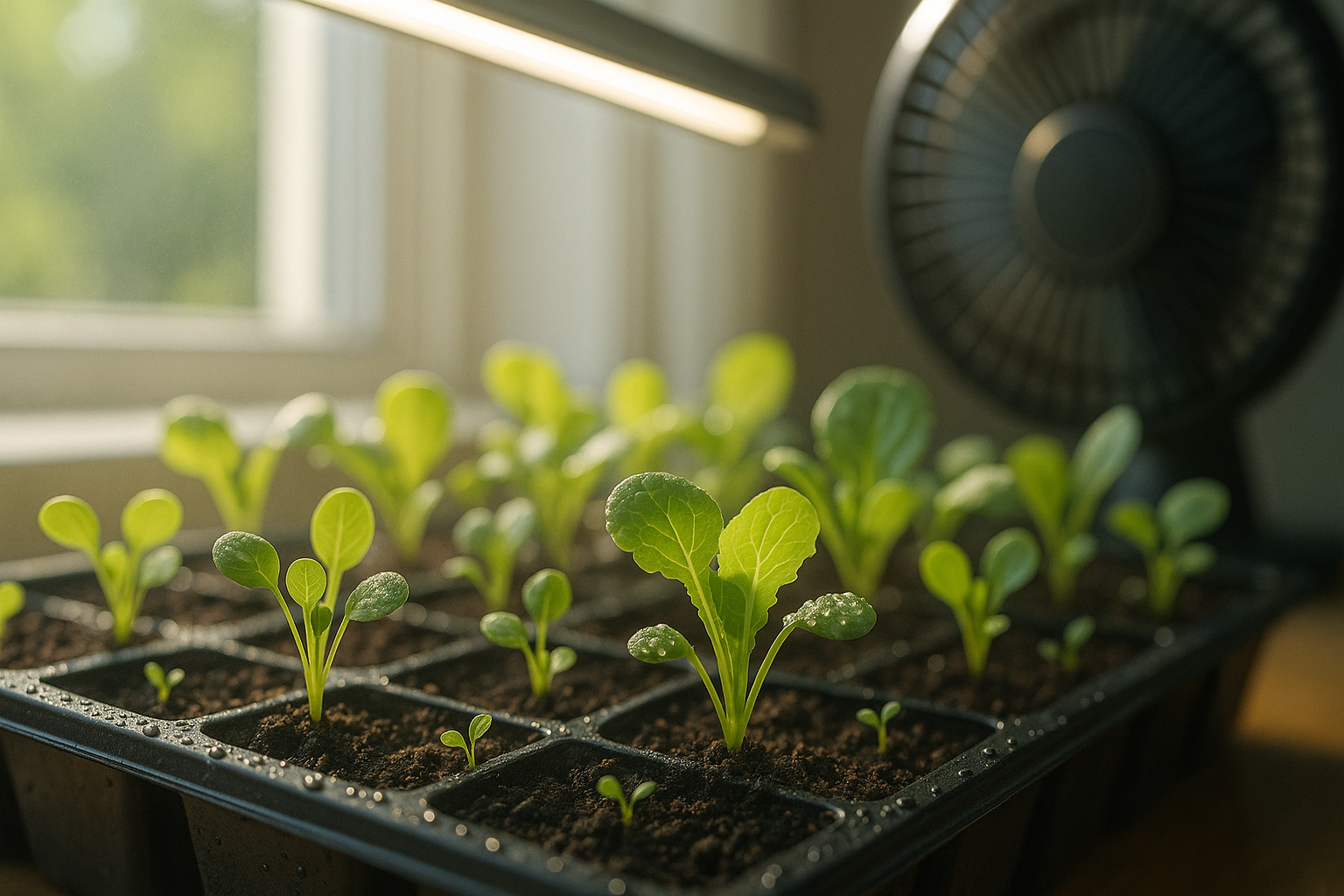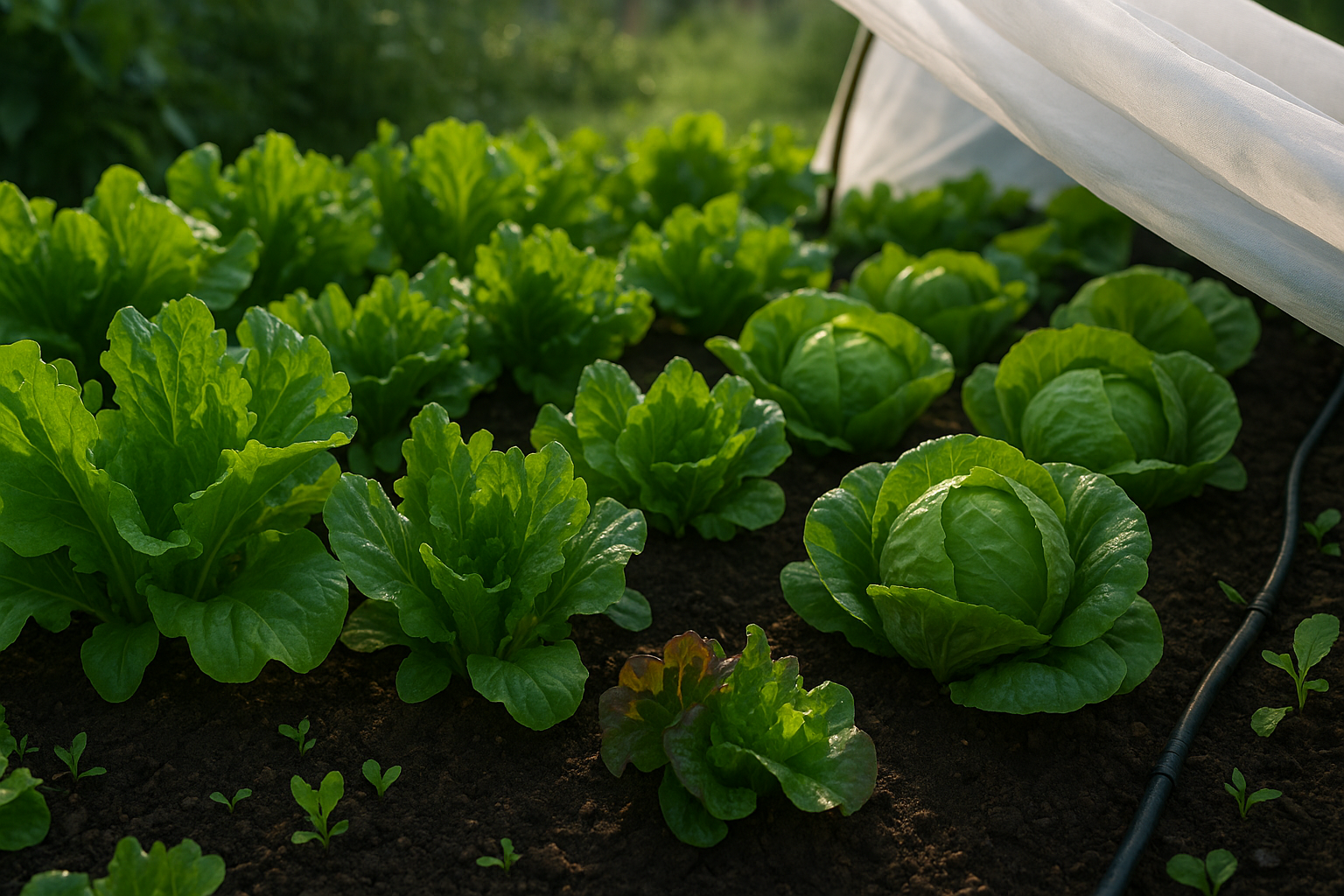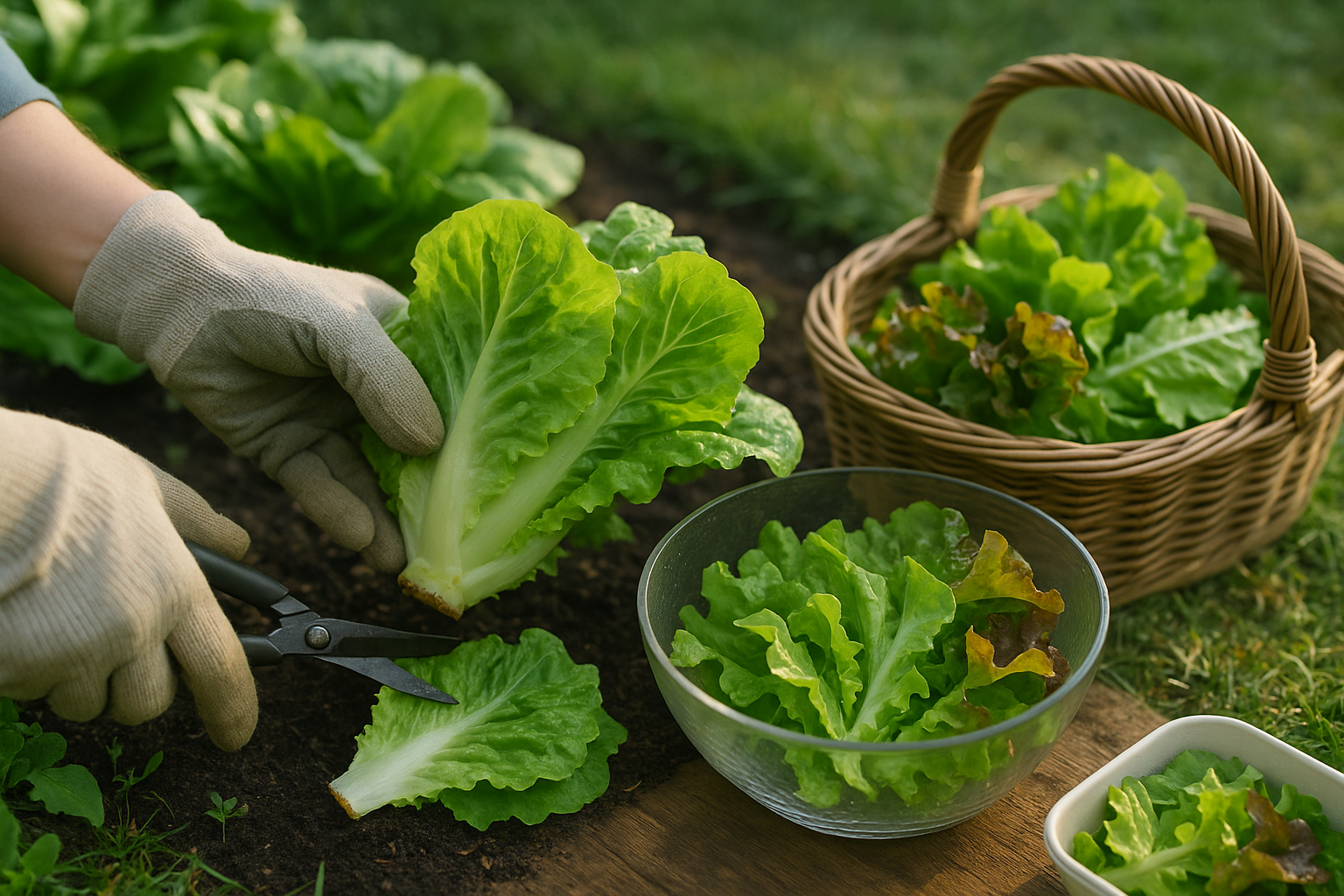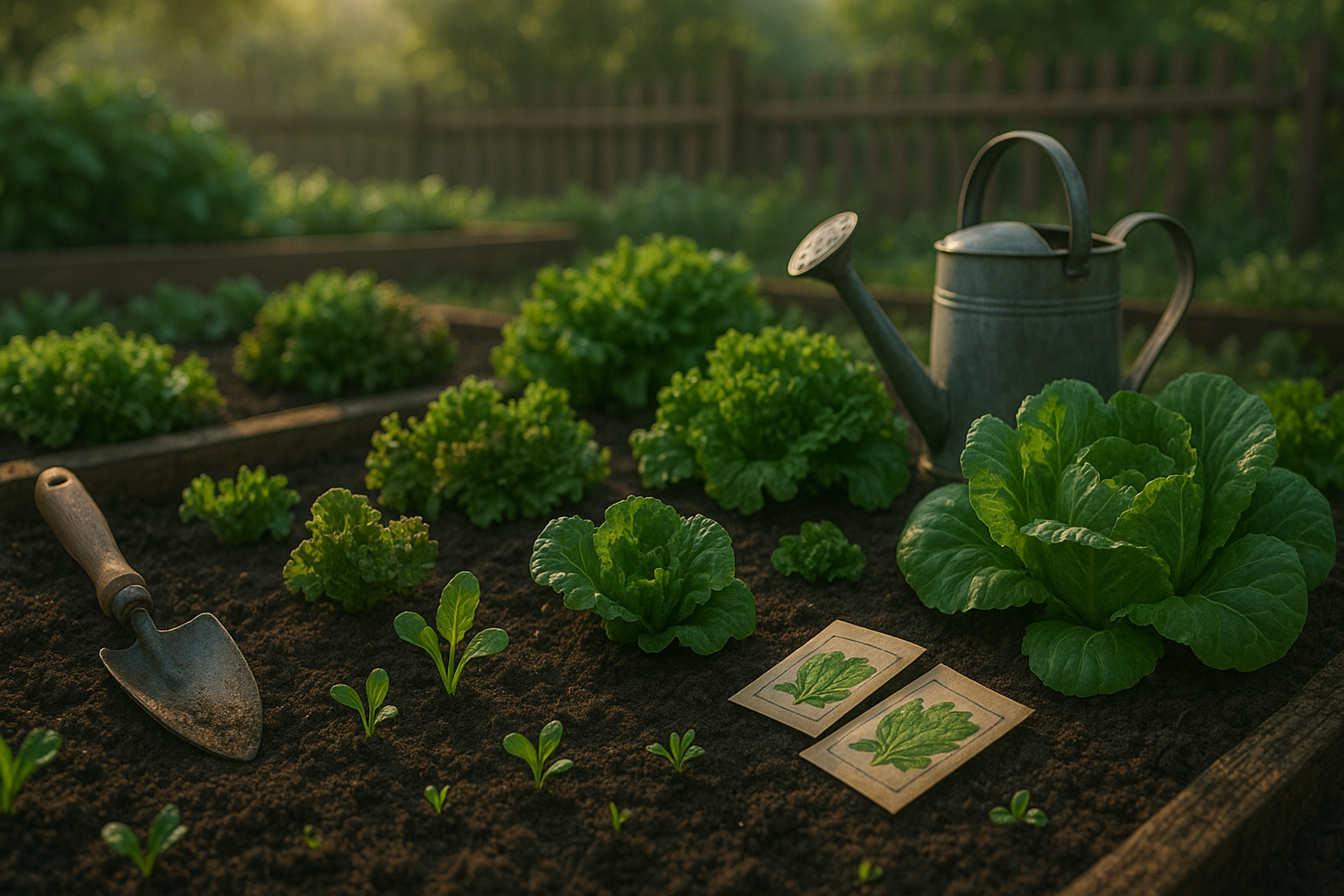Introduction
Understanding lettuce growth stages is crucial if you want to maximize your salad yields and enjoy crisp, homegrown greens all season long. Whether you’re a first-time gardener or a lettuce-loving pro, knowing what happens from seed to harvest can make all the difference between a so-so crop and a garden overflowing with fresh leaves.
Many new growers are surprised to learn how quickly lettuce matures and how easy it is to stagger plantings for a steady supply. In this post, you’ll discover each phase of the lettuce growth timeline—from germination and early sprouting to leafy development, head formation, and the perfect harvest window.
Along the way, I’ll share key tips for getting your seeds off to a strong start, keeping pests at bay, and knowing exactly when to pick your lettuce for top-notch flavor and texture. Growing your own lettuce isn’t just rewarding—it can also save money and reduce kitchen waste. Plus, there’s nothing like the taste of lettuce picked minutes before lunch!
If you’re ready to take the guesswork out of your lettuce patch and keep greens on your table week after week, this guide will set you—and your garden—up for success.
Lettuce Growth Stages Overview
Growing lettuce is a bit like following a simple recipe, where each step leads to a fresh, crisp harvest. It all starts with a tiny lettuce seed, which, under the right conditions of moisture and warmth, spends about 2 to 7 days waking up in the germination stage. Imagine this as the seed’s “alarm clock,” signaling it’s time to sprout roots and push a small shoot above the soil.
Once germinated, lettuce enters the seedling stage, usually lasting 2 to 3 weeks. At this point, the plant looks delicate, sporting its first baby leaves (cotyledons) and beginning to soak up sunlight.
Leaf, romaine, and head lettuces all look similar at first, but as they move into vegetative growth — the longest stage, spanning 3 to 6 weeks — their personalities emerge. Leaf lettuce quickly forms loose, open leaves that are usually ready to harvest sooner, while romaine grows tall, crisp columns. Head lettuces like iceberg develop tight, round hearts that take a bit longer to fill out. Think of this stage as a simple salad bowl with ingredients getting tossed together, each type of lettuce showing its unique shape and flavor.
Eventually, as temperatures rise or the days get longer, lettuce can enter the bolting stage; it’s like the recipe suddenly speeding up as the plant shoots up a central stalk and prepares to flower. Bolting can happen very quickly — sometimes in just a few days — and signals that the leaves will turn bitter and that the lettuce is past its prime for eating.
For the best taste and texture, harvest lettuce before bolting:
- Leaf lettuce is often ready to pick in as little as 30 days
- Romaine in about 60 days
- Head lettuces usually take up to 75 days
Each stage is a crucial ingredient in growing lettuce, resulting in crunchy, garden-fresh leaves when timed just right.
Getting Started – Planting & Germination
Lettuce is one of the easiest crops to start from seed, whether you’re working with a backyard plot or a few containers on a balcony. The best time to plant lettuce seeds is in the cooler seasons, either early spring or late summer, as lettuce thrives in cool temperatures (ideally between 55°F and 65°F).
You have two options for planting: direct sowing outside or starting seeds indoors for later transplanting.
Direct Sowing
Direct sowing is simple—prepare the soil by loosening it to a depth of six inches and mixing in some compost for nutrients. Then, scatter seeds or plant them individually about 1/8 inch deep and 1 inch apart.
- For head lettuce, thin out seedlings to 10-12 inches apart as they grow.
- For leaf types, 4-6 inches apart is enough.
Starting Seeds Indoors
If space or weather is a concern, start seeds indoors in seed trays. Transplant sturdy seedlings outside after two to three weeks, once they have a couple of true leaves and temperatures remain above freezing.
Key Tips for Germination
- Lettuce seeds need light to germinate, so don’t bury them deeply—just a light dusting of soil is perfect.
- Consistent moisture is key, but avoid waterlogging; a daily misting works well until you see sprouts, usually within 7–10 days.
- Lettuce seeds can struggle with high heat, so in summer, provide some afternoon shade or keep trays indoors.
- Common challenges include birds eating seeds, uneven watering causing poor germination, or temperatures above 75°F leading to dormancy.
- Using a floating row cover outdoors can help protect seedlings and maintain ideal conditions as you get started.
Seedling Stage & Early Growth

During the seedling stage, your young plants are just starting to push through the soil, often showing a pair of small, round “seed leaves” called cotyledons before their true leaves emerge. At this point, seedlings look delicate and require careful handling.
Keep the soil consistently damp but never soggy—watering with a spray bottle helps avoid disturbing the fragile roots. Good airflow and plenty of light are vital; place seedlings by a sunny windowsill or under grow lights for 12–16 hours each day, keeping the bulbs just a few inches above the leaves to encourage sturdy growth.
If seeds were sown thickly, thin them out as soon as each plant has a few true leaves, leaving the strongest seedling every 2–4 inches. Overcrowding can lead to weak, leggy growth and poor root development.
Use a small fan set on low to gently move the air, which strengthens stems and helps reduce fungal problems like damping-off—a disease that causes seedlings to suddenly wilt and collapse.
If you notice seedlings stretching tall and spindly, they probably need more light; reduce the distance to your grow light or rotate trays for even exposure. Avoid over-fertilizing at this stage; wait until seedlings have several true leaves before introducing diluted liquid fertilizer to encourage healthy roots and lush, green foliage.
Watching for signs of trouble and adjusting quickly—such as removing any weak or diseased seedlings—gives your young plants the strongest start and sets the stage for a successful garden later on.
Vegetative Growth & Heading (Leaf Development)

During the vegetative growth stage, lettuce plants focus on producing strong, healthy leaves—the fuel they need for rapid development and eventually forming a delicious, crisp head. For head lettuce varieties, you’ll first notice an initial rosette of wide, lush leaves, which serves as the foundation for what’s known as “cupping & heading.”
As the plant matures, the innermost leaves begin to curl inward, forming a bowl or “cup.” Over time, this cupping becomes more pronounced, and the leaves press tightly together, creating the classic dense head.
To support this crucial period, keep the soil consistently moist but not soggy, watering early in the day to avoid fungal issues. Lettuce is a heavy feeder; applying balanced, slow-release fertilizer at planting and a gentle side-dressing halfway through the vegetative stage helps maintain robust growth.
Ideal temperatures for optimal heading range between 60–70°F (15–21°C). Lettuce prefers full sun but can benefit from afternoon shade in hotter climates to prevent stress that leads to bolting. Use floating row covers if spring days suddenly heat up, and always keep an eye out for early bolting cues—these include leaves elongating vertically, a tightening crown, and the beginnings of a flower stalk.
Fast leaf yellowing, bitterness, or rapid upright growth means it’s time to harvest or risk sacrificing flavor and texture. As your lettuce nears maturity, the head should feel firm when lightly squeezed but not rock-hard, and outer leaves should be deep green and fully expanded.
By staying vigilant and making small care adjustments, you’ll help your head lettuces develop into crisp, satisfying bundles ready for harvest.
When & How to Harvest Lettuce

Knowing the right time to harvest your lettuce makes all the difference between a crisp, flavorful salad and wilted greens. Look for visual clues: for leaf lettuces like romaine or butterhead, harvest once the leaves reach a desirable size—typically 4 to 6 inches long—and before they start to bolt (send up a flowering stalk).
For heading varieties such as iceberg, wait until the heads feel firm when gently squeezed, but don’t delay too long or the outer leaves may toughen.
If you prefer a longer harvest window, try the “cut-and-come-again” method: use clean scissors or a sharp knife to snip the outer leaves about an inch above the soil, allowing the inner leaves to regrow for future pickings. This method is perfect for loose-leaf types and can keep your salad bowl full for weeks.
Alternatively, if you need a larger quantity or want to clear space, harvest the whole head at the base with a clean cut, ideally in the cool morning when lettuce is most hydrated. Handle heads gently to avoid bruising, and place them directly into a cool basket or container.
Once inside, rinse off dirt, pat leaves dry with a paper towel, and store in a breathable produce bag or wrapped loosely in damp paper towels inside your fridge’s crisper drawer. Quick, careful harvesting and cool, moist storage are the secrets to crisp, garden-fresh lettuce that lasts.
Conclusion & Quick Timeline Recap
Growing lettuce is a rewarding process that moves quickly from seed to harvest. Most lettuce varieties sprout within 7-10 days, develop their first true leaves by the second week, and reach the baby leaf stage in about 3-4 weeks. Head-forming types are typically ready for harvest around 6-8 weeks after sowing.
To enjoy a steady supply, try succession planting by sowing new seeds every 2-3 weeks, so you always have fresh plants growing. Mixing fast-growing leaf varieties with slower, heartier romaines or butterheads also ensures you’ll have both quick snacks and larger harvests.
To maximize production, grow lettuce in partial shade as temperatures rise, and choose heat-tolerant varieties in summer to avoid bitter, bolting heads. Whether you’re working with a backyard bed or a few containers on a balcony, you can enjoy crisp, healthy leaves nearly year-round with a bit of planning.
Don’t wait to get started—growing your own lettuce saves trips to the store, boosts your meals with just-picked flavor, and brings the satisfaction of harvesting something fresh from your garden.
